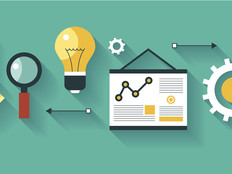Cloud Software Benefits May Prove Elusive Without Proper Management
Software as a Service (SaaS) offers a deep pool of bottom-line and competitive benefits, including immediate updates to new versions of critical applications, low upfront costs and greater scalability.
Yet these benefits also come with some challenges. Without proper SaaS license management (SLM) in place, organizations may face additional charges, pay for unused software or fail to receive the full benefits provided by cloud-based software.
Ensuring that every user covered under an SaaS application license is actually using the software, or using it in accordance with licensing policy, isn't easy. Many organizations don’t manage their SaaS applications and licenses effectively, so they miss opportunities to optimize their usage of this software.
Why SaaS Licenses Are Different
SaaS licenses are fundamentally different from software licenses purchased under traditional models. IT leaders need to understand these differences or risk being undermined by unexpected and unnecessary expenses. They also must be wary of the risk of a software audit, which can reveal the use of applications outside of a licensing agreement, leading to the payment of substantial fines and “true-up” charges.
Because managing applications hosted in the cloud can differ significantly from on-premises software asset management (SAM), the use of a licensing management solution that can recognize and effectively deal with SaaS deployments is necessary. “The difference mainly revolves around the increased shift toward utilization versus static licensing,” says Sreenevas Subramaniam, a senior product manager at Hewlett Packard Enterprise. SaaS vendor platforms are able to supply app performance and usage information almost instantaneously, which is unlike most SAM solutions. “The whole analysis and prediction model is much more dynamic and requires a very robust SAM system,” he notes.
Furthermore, each SaaS provider sets different pricing policies and usage rules. Some providers charge a flat rate for unlimited use, while others charge a fee based on the number of users or processors running the software. This means that IT leaders must keep track of different rates and usage rules if they purchase software licenses from multiple SaaS providers. Leaders must also manage quarterly and monthly subscriptions, keeping up with changes in each provider’s user agreement.
“Let's say that instead of 10 user licenses for a human resources department, you have a license that varies depending on whether the user is in the application all the time or every once in a while,” says Amy Konary, research vice president for software licensing and mobile enterprise applications at IDC. “Or, let's say the vice president of HR might have a different set of things he or she can access, versus the benefits administrator, who would have a different set of things they can access compared to the payroll coordinator.”
Even if an IT staff member possessed the knowledge, flexibility and patience to understand and track such complex rules, the work would consume an immense amount of time. A SAM solution can do the job much faster, more accurately and at a lower cost.
The Threat of Shadow IT
Another situation where SaaS becomes tricky, and when a SAM solution becomes helpful, is when business units purchase their own applications without the permission or knowledge of the IT department. “A lot of business users are using SaaS applications outside of the purview of centralized IT – this is the shadow IT dynamic – and that means that there's a high likelihood that the appropriate security controls aren’t being applied,” says Doug Cahill, a senior analyst at the Enterprise Strategy Group.
Along with security risks, shadow IT can create new and unnecessary software-related costs. Users, for example, could secretly purchase software that the organization already possesses licenses for. This duplication is common, especially in large organizations, and may even be driven by the low cost and flexibility of SaaS software. Individual users, or even whole departments, can easily purchase an SaaS solution without a major investment. Yet in many cases, IT could simply add users to an existing SaaS license that can be managed more effectively and securely.
“While SaaS vendors do provide basic tools to monitor usage made by their tenants, only limited information linked to pricing is revealed,” Subramaniam says. “An organization without any SAM solution risks greatly overspending without having the possibility to quickly and rationally scale down their usage due to lack of visibility.”
SAM also helps IT leaders keep track of SaaS licenses when users no longer need the software, such as when they change jobs or leave an organization. A user’s credentials can be reharvested and distributed to another user.
Learn more about software asset management and how your organization can find additional savings at CDW.com/softwaremanagement.









